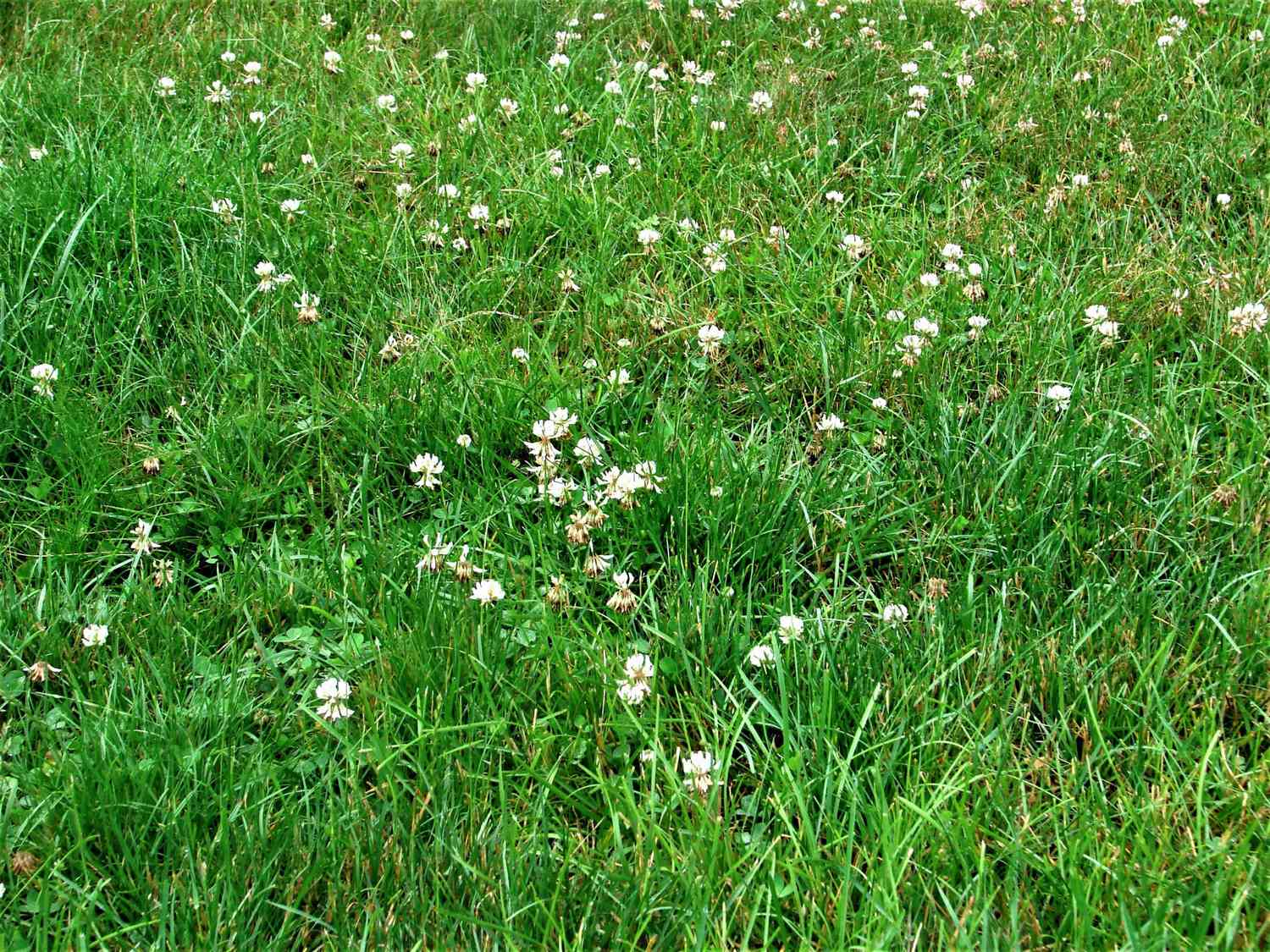Clover can be simple to adopt, even for a first try. This guide explains in detail how you can achieve a hitch-free grass to clover transition, including soil preparation steps, overseeding, and the right moisture habits. You’ll also get layout ideas, pollinator friendly pairings, and simple fixes for patchy areas. Let’s get started!
How to Transition from Grass to a Clover Lawn
Clover helps to transform a thirsty yard into tough and green ground cover that still feels soft under your foot. If you’re wondering how to transition from grass to a clover lawn, keep the grass short, loosen the surface, evenly broadcast seed, and keep the moisture as steady as possible.
Pulling back on chemicals and quick-release fertilizers are eco-friendly lawn tips that help seedlings get established. Nitrogen-fixing clover helps to promote sustainable lawn care by nourishing the soil throughout the season. A partial overseed along walkways first may lead to a smooth grass-to-clover conversion later.
Why Clover Lawns Are Growing in Popularity
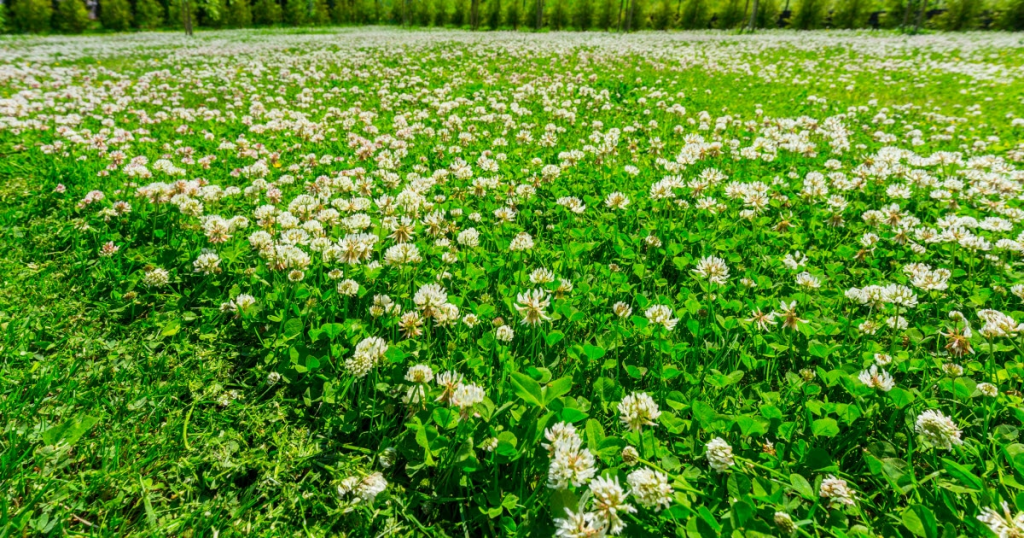
One practical clover lawn idea is to mix white clover into turf, and then let it fill the thin spots that grass is having a hard time with. This is in line with eco-conscious lawn trends because clover helps to add nitrogen to the soil, and this in turn helps to reduce the need for fertilizers.
Clover is one of the many sustainable landscaping options, and it’s not a surprise that it handles heat and dry spells better than a lot of other grasses. Looking for backyard clover inspiration? Overseed any shaded corners or along paths. This can help to cut down on watering and mowing. The result is a soft, pollinator friendly lawn that still looks clean through summer.  
Step-by-Step Guide to Transitioning Your Lawn
Clovers take off when seed touches bare soil. Good soil preparation is very important especially for clover lawns. This means mowing low, raking out thatch, and roughing up any spots that are compact.
Spread the seeds, and then finish with a thin layer of soil so that light still reaches it. Remember to maintain an even surface moisture and limit foot traffic as much as possible. Fill any gaps by reseeding the lawn with clover once. This routine outlines how to transition from grass to a clover lawn with less fuss and better coverage.
Benefits of Clover Lawns for Biodiversity
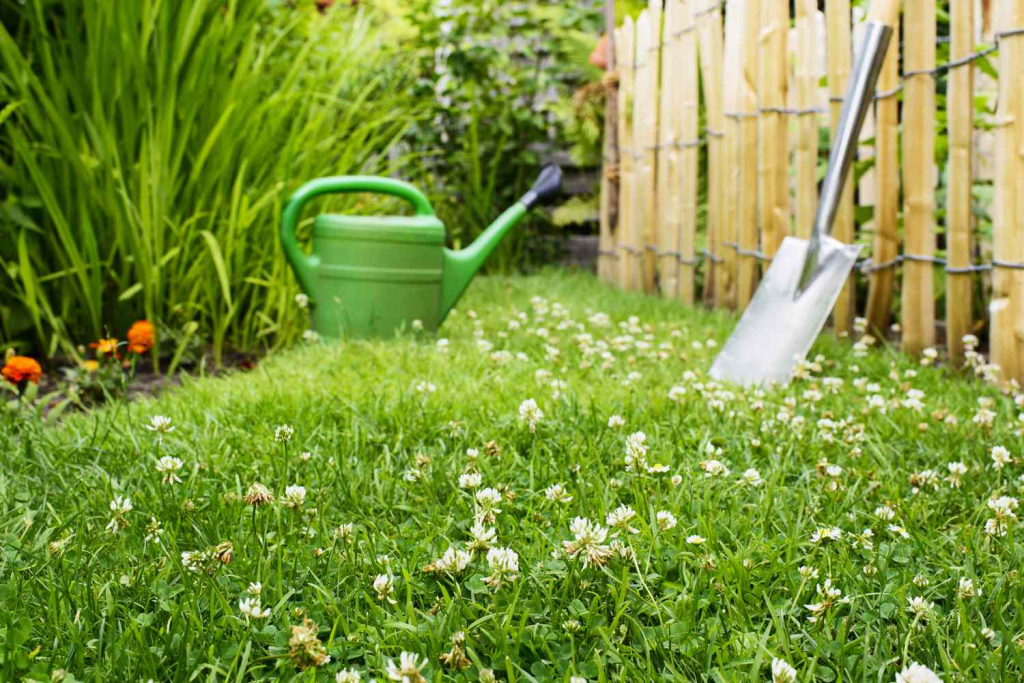
A clover lawn attracts pollinators and makes them stick around. This creates a pollinator-friendly lawn that keeps nectar and pollen within reach while keeping everywhere else tidy.
Clover has a good partnership with soil microbes which helps to supply nitrogen, therefore stacking up eco-friendly lawn benefits that decrease the need for any synthetic inputs. Replacing a portion of thirsty turf or overseeding with clover often supports the benefits of clover lawns for biodiversity and water savings without changing how a yard is used.
Low-Maintenance Pollinator Lawn Alternatives
Fewer chores and more life in the yard is the goal. Clover clearly stands out among the many low-maintenance pollinator lawn alternatives, and this is all thanks to its steady flowers and soil-friendly roots.
That self-feeding habit keeps it competitive with other easy-care lawn options in sunny areas. Add ribbons of pollinator-friendly groundcovers such as self-heal or yarrow for an extended bloom time. The patchwork matures into natural lawn alternatives that help to save time while also supporting bees.
Designing a Clover Lawn That Fits Your Style
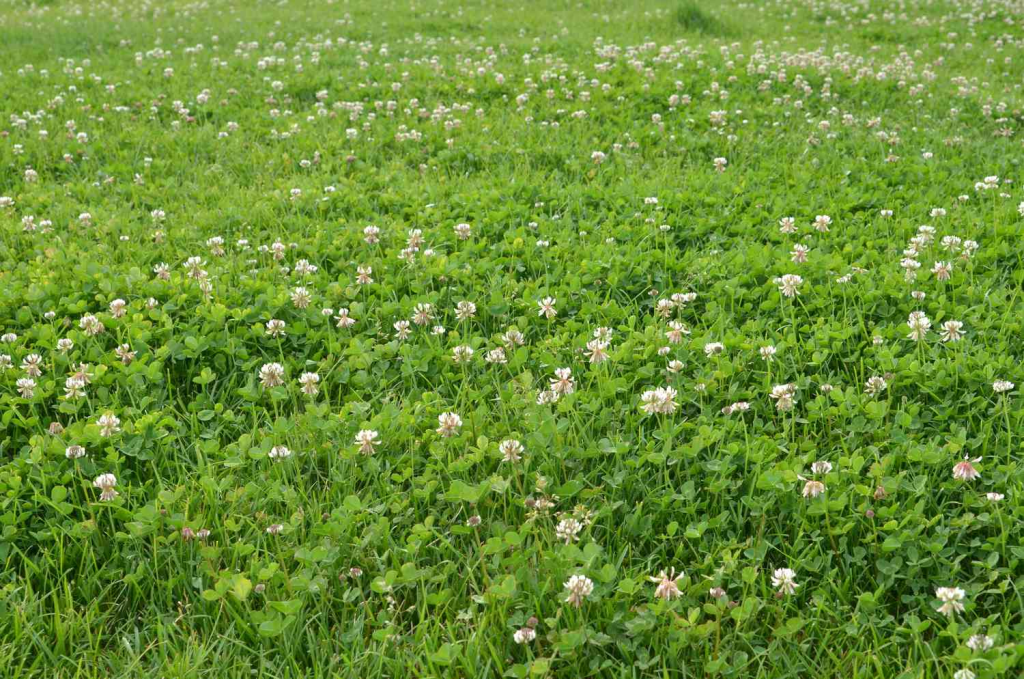
Color and texture matter, and clover brings both. In tight lots, a great clover lawn idea you can implement is a grid of stepping stones with green pockets that help to reduce wear. If you’re trying to break up monotony, you can make use of turf spines and clover banks along curves in your broad yard. This combination puts together a cohesive look.
You can pair low shrubs and seasonal flowers to achieve a sustainable backyard style, then add a crushed-stone edge or path for an eco-chic outdoor design that is easy to maintain.
Water Savings and Soil Health with Clover
Clover maintains its lushness even between rain cycles. This means that hoses can take a break and water bills can calm down. This is a very important part of water-efficient lawn care.
Soil life improves with clover, building structure that holds moisture. Because they are nitrogen-fixing groundcovers, clovers reduce the need for synthetic inputs that wash into drains. Taken together, the benefits of clover lawns include better habitat and lighter maintenance.
Common Mistakes to Avoid When Transitioning
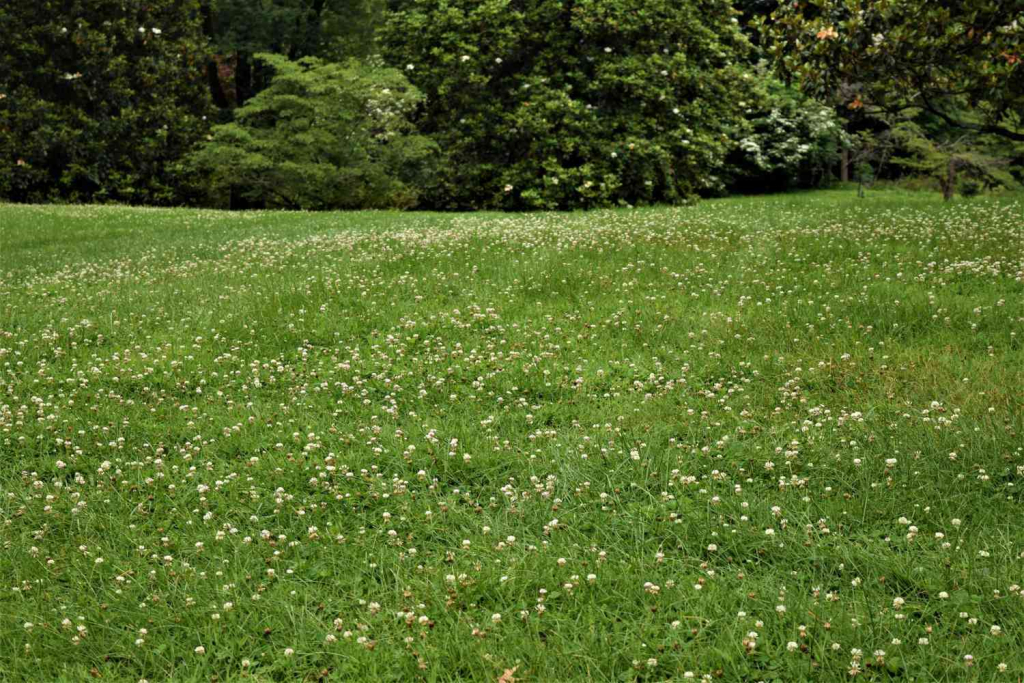
The early wins come from avoiding clover lawn mistakes that lead to seed wastage. Clear any thatch, loosen the topsoil, and make sure that the seed actually touches the mineral soil before you go ahead with watering. The amount of water you apply should be just enough to keep the surface moist.
Minimize grass-to-clover conversion errors by matching the clover with turf-type tall fescue or Kentucky bluegrass for a much more balanced growth. You might experience a few common lawn transition issues in high-traffic spots, and the best way to mitigate this is to reduce wear as much as possible until the roots are able to deepen properly. Use light overseeding as clover lawn troubleshooting to fill any gaps.
Conclusion: Why Clover Lawns Are the Future of Sustainable Yards
Healthy results show up quickly with the benefits of clover lawns. These benefits range from more consistent color to less thirsty patches during dry weeks. If you are after some clover lawn ideas, try out a curb strip conversion, a sunny side yard blend, or a small border that helps to frame a path.
Wondering how to transition from grass to a clover lawn? Start by mowing low, followed by overseeding white clover in spring or fall. It’s best that you water lightly to establish them, and then avoid broadleaf herbicides. Those interested in low-maintenance pollinator lawn alternatives can combine clover with fine fescues, yarrow, or thyme.
Test a small patch of clover on your lawn and share a before and after in the comments below!

